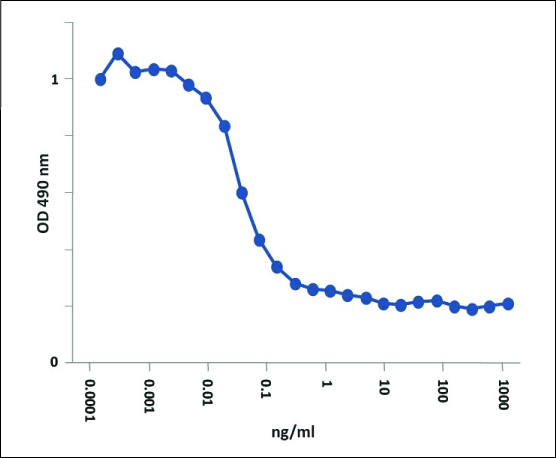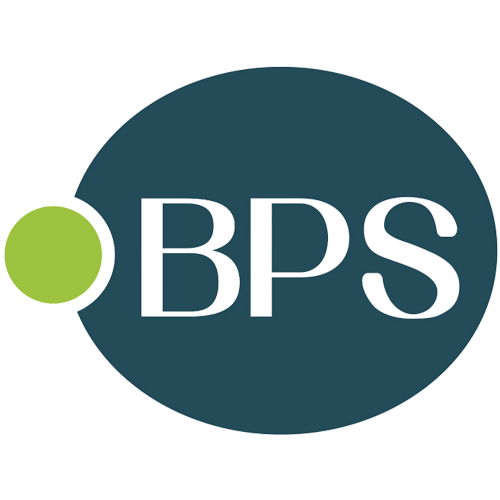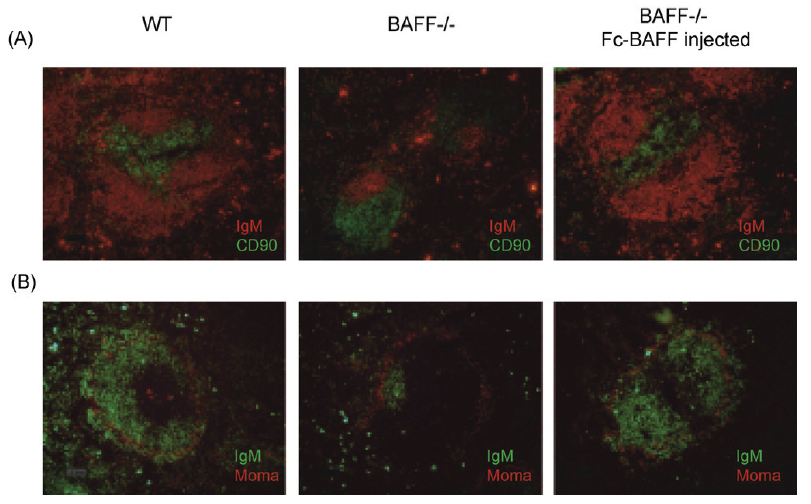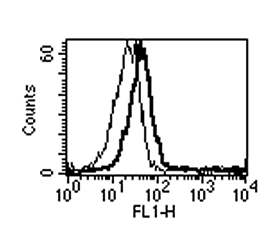
Coomassie blue staining of BAFF, Soluble (human) (60-mer) (AG-40B-0112) under reducing conditions (shows the size of the monomer).
BAFF, Soluble (human) (60-mer) (rec.) (highly active)
AG-40B-0112
Protein IDQ9Y275
Product group Proteins / Signaling Molecules
Overview
- SupplierAdipoGen Life Sciences
- Product NameBAFF, Soluble (human) (60-mer) (rec.) (highly active)
- Delivery Days Customer10
- CertificationResearch Use Only
- Concentration0.1 mg/ml
- Estimated Purity>95%
- Protein IDQ9Y275
- Protein NameTumor necrosis factor ligand superfamily member 13B
- Scientific DescriptionBAFF is mainly produced by innate immune cells such as neutrophils, monocytes, macrophages, dendritic cells, follicular dendritic cells. T cells, activated B cells, some malignant B cells and also non-lymphoid cells like astrocytes, synoviocytes and epithelial cells can also produce BAFF. BAFF binds three distinct receptors (BAFF-R, TACI and BCMA) expressed predominantly on B cells, although activated T cells also express BAFF-R. BAFF is a master regulator of peripheral B cell survival, and together with IL-6, promotes Ig class-switching and plasma cell differentiation. Besides its major role in B cell biology, BAFF co-stimulates activated T cells. Deregulated expression of BAFF leads to autoimmune disorders in mice. In humans, elevated levels of soluble BAFF have been detected in the serum of patients with various autoimmune diseases such as Sjoegren syndrome, Rheumatoid arthritis (RA), Multiple sclerosis (MS) and Systemic Lupus Erythematosus (SLE). BAFF has also increased levels in some lymphoid cancers. Processed human BAFF can either remain as a trimer, which is usual for TNF family ligands or assemble into 60-mer composed of 20 trimers. Mouse BAFF 60-mer has been identified in the serum of BAFF transgenic mice. Oligomerization of BAFF 3-mer into 60-mer in human BAFF is prevented by mutation of His218, a residue critical for 3-mer-to-3-mer interactions, but not for receptor binding. Despite the predominant functional role of processed BAFF in vivo, membrane-bound BAFF might also play a role. Indeed, soluble BAFF (3-mer) can trigger BAFF-R but not TACI or BCMA, whereas oligomeric forms of BAFF (BAFF 60-mer), which mimic membrane-bound BAFF, activate all BAFF receptors. - Protein. The extracellular domain of human BAFF (aa 134-285) is fused at the N-terminus to a His-tag. Source: E. coli. Endotoxin content: 95% (SDS-PAGE). BAFF is mainly produced by innate immune cells such as neutrophils, monocytes, macrophages, dendritic cells, follicular dendritic cells. T cells, activated B cells, some malignant B cells and also non-lymphoid cells like astrocytes, synoviocytes and epithelial cells can also produce BAFF. BAFF binds three distinct receptors (BAFF-R, TACI and BCMA) expressed predominantly on B cells, although activated T cells also express BAFF-R. BAFF is a master regulator of peripheral B cell survival, and together with IL-6, promotes Ig class-switching and plasma cell differentiation. Besides its major role in B cell biology, BAFF co-stimulates activated T cells. Deregulated expression of BAFF leads to autoimmune disorders in mice. In humans, elevated levels of soluble BAFF have been detected in the serum of patients with various autoimmune diseases such as Sjoegren syndrome, Rheumatoid arthritis (RA), Multiple sclerosis (MS) and Systemic Lupus Erythematosus (SLE). BAFF has also increased levels in some lymphoid cancers. Processed human BAFF can either remain as a trimer, which is usual for TNF family ligands or assemble into 60-mer composed of 20 trimers. Mouse BAFF 60-mer has been identified in the serum of BAFF transgenic mice. Oligomerization of BAFF 3-mer into 60-mer in human BAFF is prevented by mutation of His218, a residue critical for 3-mer-to-3-mer interactions, but not for receptor binding. Despite the predominant functional role of processed BAFF in vivo, membrane-bound BAFF might also play a role. Indeed, soluble BAFF (3-mer) can trigger BAFF-R but not TACI or BCMA, whereas oligomeric forms of BAFF (BAFF 60-mer), which mimic membrane-bound BAFF, activate all BAFF receptors.
- Storage Instruction-20°C,2°C to 8°C
- UNSPSC12352202



